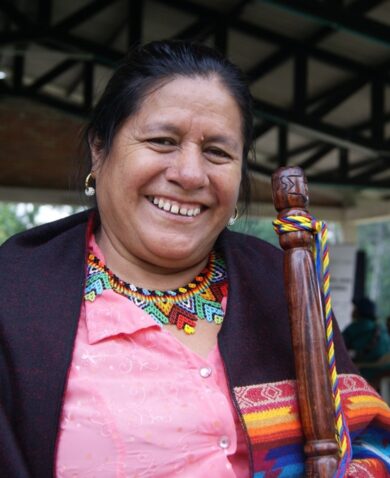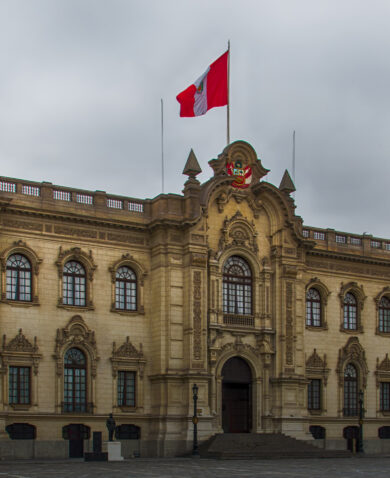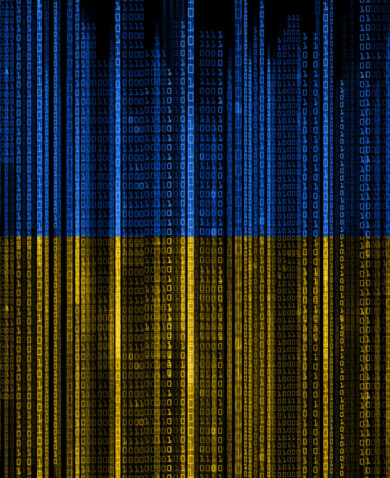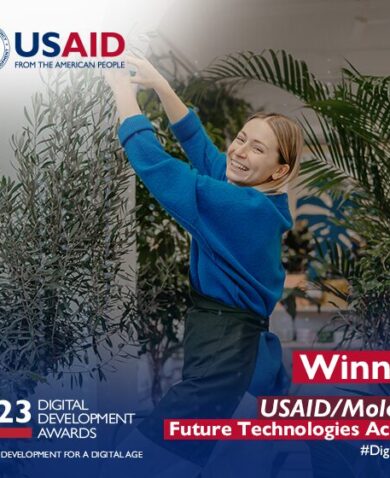
Adopting a Network Approach: Three Steps for Promoting Information Integrity
August 16, 2024 | 4 Minute ReadWhile supporting independent media is important, an integrated network approach is essential for strengthening and promoting a reliable information ecosystem.
In Ukraine, Russia’s dis-information campaign is being used to wipe out a whole culture from history. In Taiwan, tampered-with videos “showed” an election worker incorrectly tallying votes, threatening public trust in the election result. The AI-generated robocalls mimicking President Biden’s voice targeting New Hampshire voters call into question the use of AI-generated content in campaigns. These examples demonstrate the extensive impact attacks on information integrity can have on society.
The sustainable development community has historically responded to mis-, dis-, and mal-information (MDM) by increasing support to independent media, including the creation of content that seeks to strengthen values such as democracy, inclusion, human rights, and rule of law. Despite these efforts, however, MDM remains prolific and an increasing threat to sustainable development gains.
The current framing of the problem focuses primarily barriers to accessing reliable content. However, this ignores the enabling factors that incentivize malicious actors to target the information ecosystem. An integrated network approach – one which considers the political, social, and economic relationships between individuals and organizations – provides the international development community with a framework to understand, counter, and continuously track and adapt to MDM.
Step 1: Understand MDM
Information integrity is under threat worldwide from mis-, dis-, and mal-information. While all three are harmful, there are important distinctions:
- Mis-information is false information that is created or spread without deliberate intention to cause harm.
- Dis-information is false information that is created and spread with malicious intent, often for political persuasion, financial incentive, psycho-social manipulation.
- Mal-information is factually correct information, often presented out of context, and distributed to intentionally cause harm.
While the content itself can look similar – and may even elicit the same response from audiences – it is important to understand the motivations behind the creation and spread of mis-, dis-, and mal-information. The need to clearly understand motivations is particularly pressing given that MDM is not unique to large state actors or a few savvy individuals. With the increased use of the internet and messaging apps, individuals can now play a larger role in widespread information sharing.
Social network analysis, or the use of data on social networks to visualize social, political, and economic relationships, can inform an integrated network approach. This information can then be incorporated into program design, monitoring, and evaluation. By recognizing individuals and organizations as independent, yet interrelated participants in the information ecosystem, a network approach allows us to better understand the motivations and enabling conditions that drive the spread of MDM.
The USAID Security Sector Governance project mapped the major dis-information actors and their individual goals using social network analysis to assess the potential impact on Nigerien society and provide tailored recommendations based on a clear understanding of who was perpetuating dis-information. For example, they recommended drawing on the strength of close community networks that reflected village, mosque, tribe, clan, and other forms of kinship. Connecting members of these smaller, decentralized community networks with sources of trusted information that they can share with their community was critical in bolstering their resiliency to MDM. By adopting a network approach, the USAID Security Sector Governance project gained a comprehensive understanding of the relevant relationships and issues. This, in turn, informed more responsive, effective approaches to building community coalitions capable of preventing greater spread of MDM.
Step 2: Counter MDM
The development community’s strategies to effectively counter MDM must be as varied as those driving the proliferation of MDM. Potential interventions include building the capacity of local and regional organizations to fact check, advocate for improved platform regulations, and strengthen digital literacy skills. Development programs should also support independent news outlets, influencers, and other mainstream media to provide fact-based content that reaches larger local audiences. Together, these activities help implementers build trust in both specific local information sources and the broader information ecosystem.
The USAID/Syria Regional Project II (SRP II) established small community groups – particularly in low-income and isolated communities – to encourage discussion about current events. At the same time, SRP II partnered with national media outlets to improve the quality of their content, which reached millions of followers. Internationally, SRP II facilitated relationships between moderate Syrian media and international news outlets to reach a global audience, including members of diaspora communities. By working at these three levels – community, national, and international – SRP II simultaneously targeted multiple nodes of the Syrian information ecosystem. Because these individuals, organizations, and governments each had independent relationship networks, SRP II was able to counter MDM at a larger scale than any one activity could accomplish alone.
Step 3: Continuously Track MDM
Today’s news cycle, coupled with increasingly convincing artificial intelligence systems, allows malign actors to instantaneously shared information far and wide. The international development community must be equally quick to track and analyze what information is being spread, how it is spreading, and where it is coming from.
A network approach provides a framework to remain agile. With the speed at which MDM content is created, no one organization can effectively track it alone. It takes a network of organizations and individuals working together. When faced with the urgent need to track Russian dis-information, the USAID/OTI Ukraine Confidence Building Initiative 4 (UCBI) team quickly assessed and focused their efforts on leveraging the strengths of local organizations. Ukrainian artificial intelligence startup LetsData tracked data from international media to produce weekly reports for the Ukrainian Information Resilience Network, whose members include civil society and government institutions. The network, designed and convened by UCBI, uses the reports to inform their combined strategic communications efforts to disseminate trustworthy information.
The information ecosystem plays a critical role in society, especially during conflict and elections. Mis-, dis-, and mal-information fuels social divisions, political insecurity, and conflict worldwide. While the sustainable development community has long struggled to effectively address MDM through content creation programming alone, adopting an integrated network approach – one which comprehensively recognizes and leverages the unique capabilities of citizens, civil society, media, and government – could provide a pathway towards more effective protection and promotion of information integrity.
Posts on the blog represent the views of the authors and do not necessarily represent the views of Chemonics.






















































